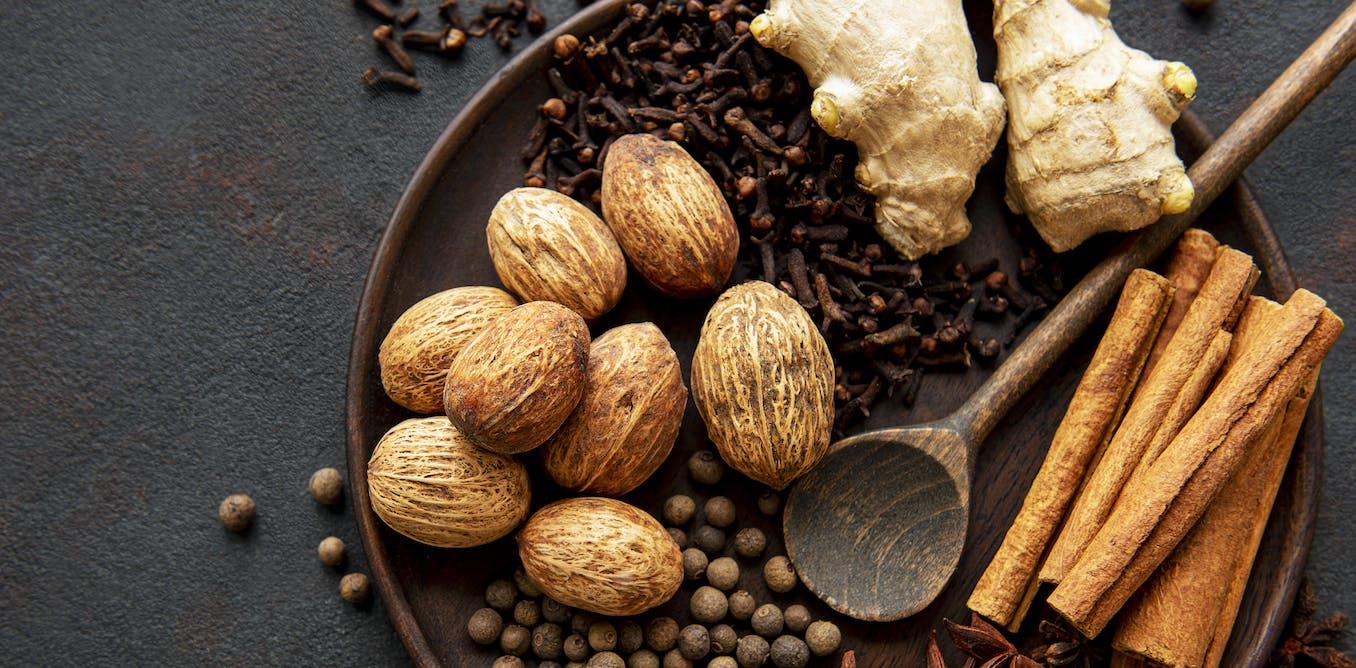But . . . They don’t answer the premise of the article?
Like, it’s interesting information about those plants but they don’t say why they’re associated to holiday season? Cinnamon harvested after monsoon season (uh, whenever that is, they assume we know but) and ginger can be harvested whenever - but when did those spices become part of the Northern Hemisphere’s holiday? When did it happen? Who started it? How did it start? They don’t say.
They…do?
Ginger was first used for food purposes in the Middle Ages as a way of masking the taste of preserved meats, which were mainly consumed in the winter months surrounding holidays. Unlike most spices, it can be used for cooking in many forms – fresh, dried and ground, candied or pickled. Each version offers a different level of ginger’s signature bite.
Like cinnamon, nutmeg is another anti-diabetic. It has been shown to both decrease blood glucose levels and increase serum insulin. Insulin helps regulate how sugars are stored in our bodies by moving glucose out of our bloodstream and into cells, where it can be accessed later when we need an energy boost. So cinnamon can help ensure that all those holiday baked goods are put to use energetically, whether that’s right now or later.
I’m not the person you replied to but I think they still have a point. Your quote makes a mention of why ginger is used in winter since the middle ages, fair enough, but I highly doubt cinnamon and nutmeg were chosen consciously for their insulin interaction- first because it’s a relatively mild effect, second because this knowledge is relatively new (did humanity know of insulin before using these spices during the holiday season?).
I think most people reading the headline expect to find some strong historical context on why, for example perhaps these spices became cheaper or more popular during some period for whatever reason.
Yes, the article could indeed provide more information on this. There was still a small attempt, let’s say
Thanks for saving me a click.
That reminds me the ginger I was growing in my yard. Just as a curiosity. It spread wonderfully in the summer… and when winter came it said “nope, screw this tsundere climate.” [Protip: if your homeland’s weather is a rollercoaster, don’t bother growing ginger.]
Funnily enough even in my chunk of the southern hemisphere those spices end a bit associated with winter, I believe. June and its mulled wine (or mulled rum for some - I find it distasteful, but you do you).
My (unverified) but from a medieval museum I Denmark.
Spices where expensive - only for the richest. The holidays are important, so the expensive spices where used in holidays to celebrate properly.
Stumbled upon this, didn’t really know where to post it, seems in the theme for our community
Eh, I think the Christmas spice combo is actually cinnamon, nutmeg, allspice, and cloves.
 Ummmm… actually 🤣
Ummmm… actually 🤣





